A horse’s constant urge to munch on the trail is frustrating and can lead to dangerous situations.
Is your horse too busy eyeing his next meal on the trail rather than paying attention to you? Use these easy steps to put yourself back in control and re-program your horse to think twice about giving in to a snack attack.
Hustle Those Feet
A horse can only think about one thing at a time. He’s either got his attention on you or on his next snack. If you’re walking down the trail and your horse grabs a mouthful of grass, he’s obviously not thinking about you. You need to redirect his feet and make him hustle. As soon as he snatches grass, bend him around in a circle and kick his side with your inside leg. Wake him up and get his attention back on you. You’re saying to the horse, “Hey, you don’t have time to be eating grass because you’re too busy listening to me and hustling your feet!”
After you make your point, put the horse on a loose rein and dare him to take another bite. It’s important to ride on a loose rein so the horse can commit to the mistake. If he wants to take a mouthful of grass, let him. That doesn’t mean that you let your horse stop and graze for 20 minutes; just wait for him to chomp at the grass and then hustle his feet.
When I say hustle his feet, I do mean hustle his feet. This correction won’t work if you let the horse graze for five minutes and then barely get him to move. If you let him drag his feet, he’ll be too busy chewing on the grass and dreaming about his next snack to pay any attention to you. If he grabs a mouthful, make him hustle his feet like his life depends on it. Do serpentines, lope him in a circle, gallop him in a straight line, it doesn’t matter what you do, but get some energy in it. Remember, horses are basically lazy creatures and the worst punishment you can give them is hard work.
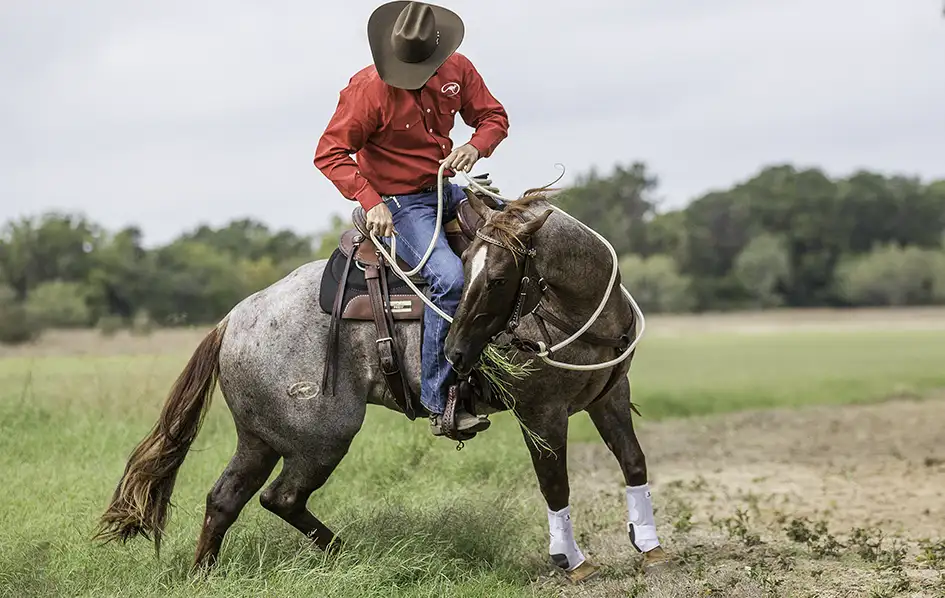
If your horse grabs a mouthful of grass, immediately put his feet to work. Make him HUSTLE!
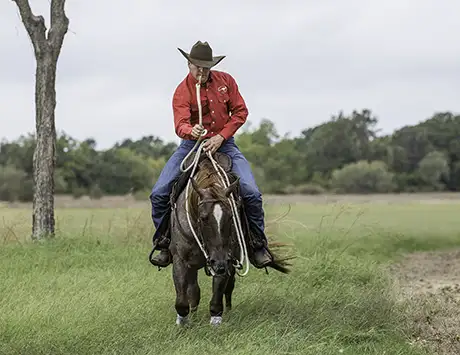
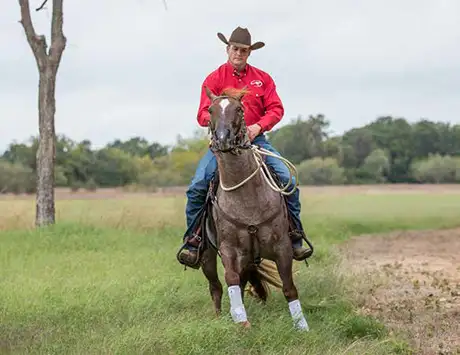
Another tactic is to pop the horse between his ears with the end of your reins.
Be prepared: When you pop the horse with your reins, it’ll startle him, which is the point, but make sure your seat is secure.
Squeeze, Cluck, Spank
If your horse stops at a patch of clover and refuses to move, even if you’re bumping him on the sides, you need to get more aggressive. Remember to use Squeeze, Cluck and Spank. Squeeze the horse with the calves of your legs to get him to move. If he ignores your squeezing, cluck to him with your tongue, “cluck, cluck.” If he still isn’t moving, spank him with the end of your reins or a dressage whip. Squeeze is politely asking the horse to go. Cluck is warning him that the spank is going to come if he continues to ignore you. Spank is doing whatever it takes to get the horse’s feet to move. You may have to really get after him if he’s being disrespectful. Always be as easy as possible, but as firm as necessary. So if your horse leans on the lazy side of the scale and has his head buried in a patch of grass, you may really have to spank him to get him to move forward.
Make Him Feel Uncomfortable
If making the horse move his feet isn’t working, try popping him between his ears whenever he tries to snatch a bite. Use the end of your reins or a dressage whip to tap him firmly enough so that you get his attention. It’s almost like a big surprise to him. Every time he opens his mouth and grabs a snack, something quickly smacks him on the top of his head. If every time he takes a bite of grass something whacks him between the ears, he’ll eventually stop going for the grass because he’ll think that he’s making himself feel uncomfortable. Timing is very important here; you want your horse to think that he is the one causing the pressure between his ears, not you. So if he grabs a mouthful of grass and is munching on it for five minutes before you correct him, the effect won’t be the same. You want him to think that the second he reaches for the grass and his lips touch it—BANG!—he gets whacked between the ears.
It goes without saying that when you pop the horse between the ears, you are going to startle him and he is probably going to jump a little. So be prepared to do a One Rein Stop or to bend the horse in a circle if necessary. You can even hang onto the saddle horn with your free hand to give yourself more security.
Be Prepared
The best piece of advice I can give you is if you know your horse has a habit of eating on the trail, don’t go walking down the trail swapping recipes with a buddy. Be prepared for your horse to make the mistake, and then make the correction. You’ll find that if you put the horse’s attention back on you and give him direction, he’ll stop eating on the trail and become an overall better trail partner.
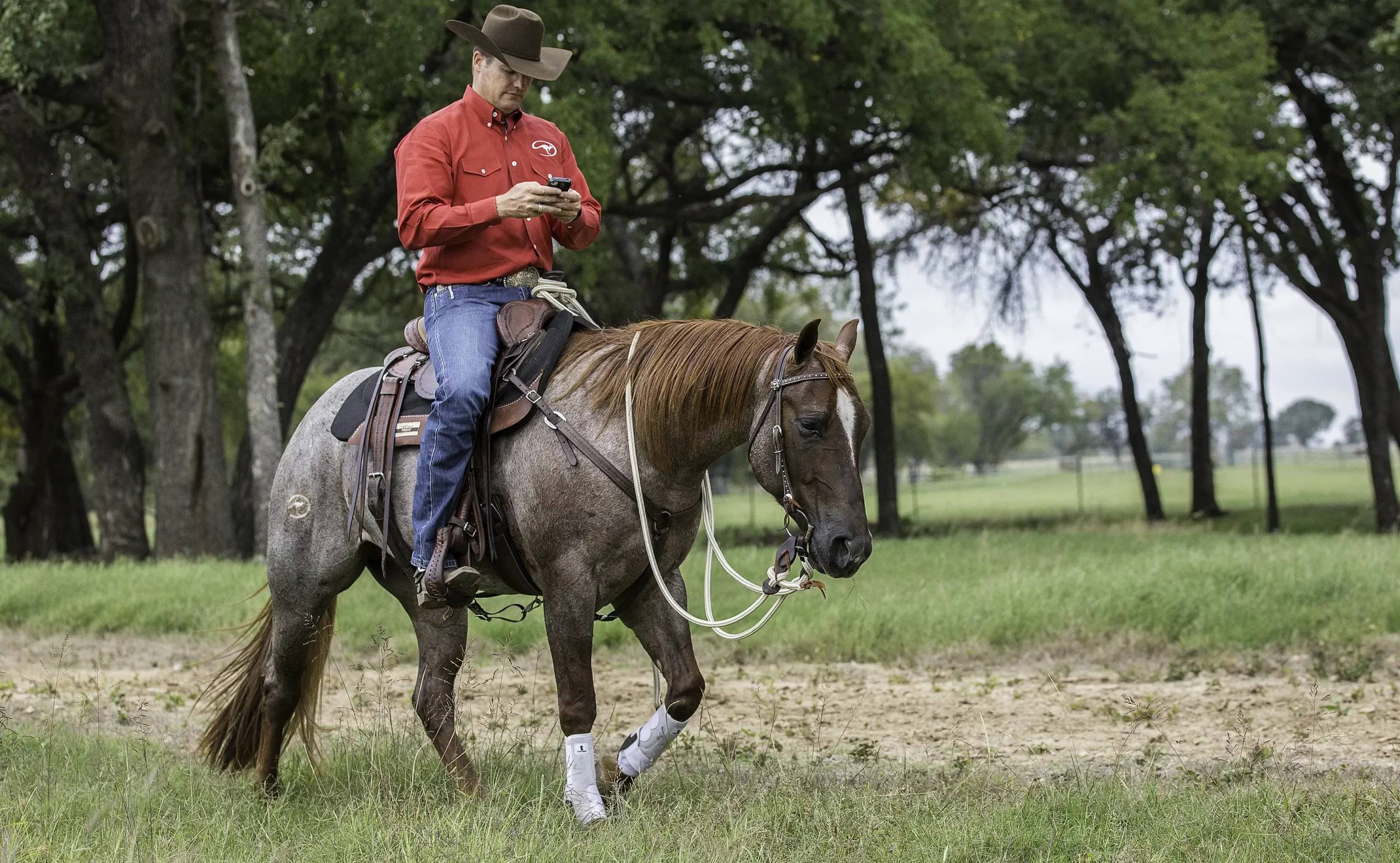
The worst thing you can do when riding your horse is to put him on autopilot and pay no attention to him.
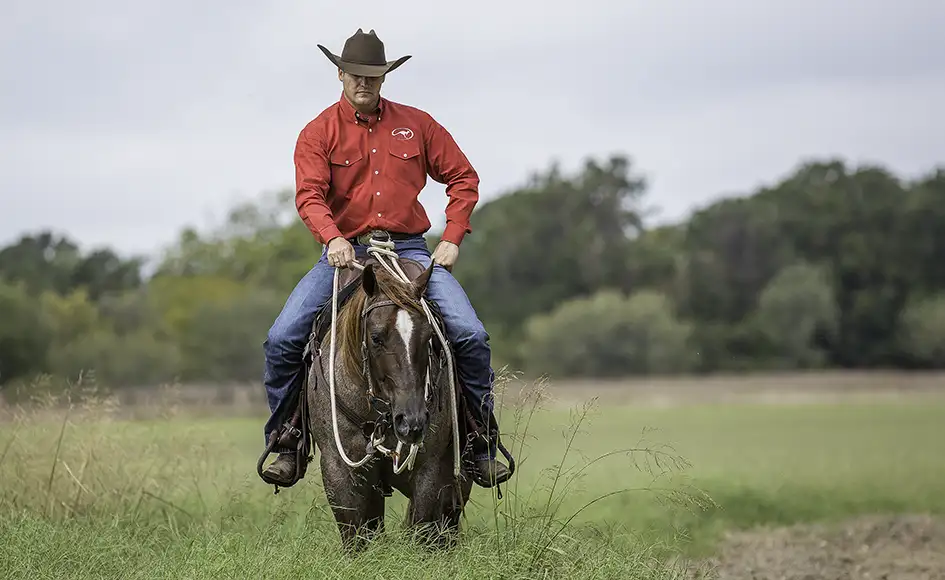
Dare your horse to snatch grass; don’t babysit him.
Let Your Horse Commit to the Mistake
The biggest mistake people make with horses that like to eat on the trail is babysitting their horses. I’m sure you’ve seen someone guilty of this plenty of times on the trail. Suzy’s horse Dobbins stretches his head down low to grab a mouthful of grass, and as soon as he starts pulling the reins through her hands, Suzy tightens her hold on the reins and scolds him, “I said there would be none of that!” Dobbins leans against the bit and when he thinks Suzy has averted her attention away from him, he attempts another snatch. This game goes on the entire trail ride, irritating Dobbins and frustrating Suzy.
Here’s the secret to correcting any problem your horse might have: You have to let him commit to the mistake. If you want your horse to stop doing a particular behavior, you must let him do it and then immediately correct him.
I tell people to think of it like this: You can’t arrest someone for standing outside of a bank with a gun. There’s nothing against the law about that. You’ve got to wait until they go into the bank, pull the gun out and start demanding money before you can arrest them. Now, you don’t want to wait so long to arrest them that they kill 20 people. You want to get the handcuffs on them as soon as they step into the bank and start waving their gun around.
What I’m getting at is that you don’t want to get after your horse before he tries to snatch a bite of grass. Let him actually grab a mouthful, and then correct him. At the same time, you don’t want to let him snack for 15 minutes before making his feet move, because then he won’t relate having to hustle his feet to eating grass.
So ride your horse on a loose rein. Let him snatch a mouthful of grass if he chooses. If he does, bang! He’s committed the robbery. Now make his feet hustle.
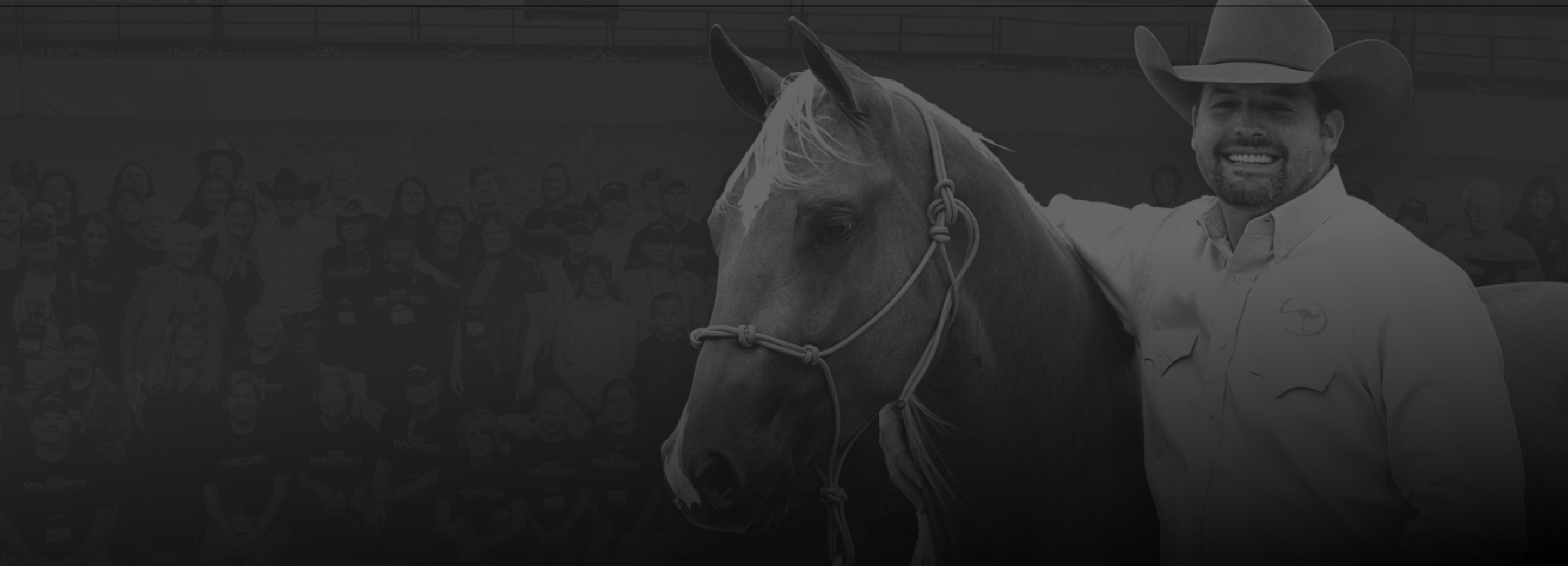
Master Your horsemanship Skills
Like these tips? Join the No Worries Club and hone your skills with thousands of hours of Clinton’s easy, step-by-step method horse training videos.



